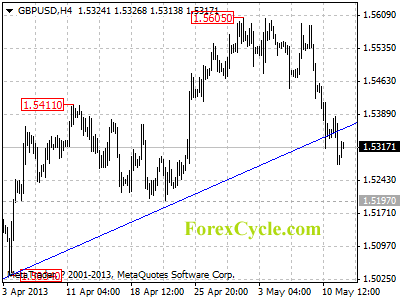London Gold Market Report
from Ben Traynor
BullionVault
Monday 13 May 2013, 07:15 EDT
SPOT MARKET gold bullion prices fell to $1430 an ounce Monday, 1.2% down on where they ended last week, as stock markets also fell and the US Dollar held onto most of its gains from last week.
Silver fell to $23.70 an ounce – 0.8% down on last week’s close – as other commodities also fell, with the exception of copper.
India’s central bank meantime confirmed proposed restrictions on gold imports that one refiner said could lead to gold imports falling by half this year.
Since breaking through ¥100 last week, the Dollar has held most of its gains against the Japanese currency, while the US Dollar Index, which measures the Dollar’s strength against a basket of other currencies, is trading close to one-year highs.
“Yen selling will have been encouraged by the outcome from [last week’s] G7 meeting,” says Bank of Tokyo-Mitsubishi currency analyst Lee Hardman, “where officials reiterated that they will tolerate Yen weakness as long as it results from the use of domestic instruments to stimulate the Japanese economy.”
The US Federal Reserve meantime has “mapped out a strategy” for winding down its $85 billion a month asset purchase program, known as quantitative easing, according to an article by the Wall Street Journal’s Jon Hilsenrath over the weekend, although “the timing on when to start is still being debated” it adds.
Hilsenrath – whom some fellow journalists have dubbed ‘Fedwire’ on account of a supposed closeness to the Fed – also filed a piece profiling current Fed vice chair Janet Yellen, describing her as a “top contender” to succeed Ben Bernanke as chair.
In a speech earlier this year Yellen said the US faces “a long road back to a healthy job market” and that Fed policymakers are “actively engaged in continuing efforts to promote a stronger economy, more jobs, and better conditions for all workers”.
The so-called speculative net long position of Comex gold futures and options traders – calculated as the difference between ‘bullish’ long and ‘bearish’ short contracts held by noncommercial traders – fell to its lowest reported level since November 2008 last Tuesday, equivalent to 245.3 tonnes, according to weekly data published Friday by the Commodity Futures Trading Commission.
“Underlying moves, while not particularly violent, were bearish,” says a note from Standard Bank.
“Speculative shorts saw 11.8 tonnes added, while 10.7 tonnes in long positions were unwound.”
The Dollar value of India’s trade deficit rose to $17.8 billion last month, up from $10.3 billion in March and $14.0 billion in April 2012, according to government data published Monday. Imports of gold bullion into India, traditionally the world’s biggest gold buying nation, jumped 138% in April as the gold price fell sharply.
Bullion imports have stayed strong this month, according to reports, ahead of today’s Akshaya Tritiya festival as well as proposed import restrictions from the central bank, which were confirmed today.
The Reserve Bank of India confirmed Monday it will implement its proposed restrictions on banks importing gold on a consignment basis, whereby bullion is shipped but ownership remains with the supplier.
“To moderate the demand for gold for domestic use, it has been decided to restrict the import of gold on consignment basis by banks, only to meet the genuine needs of exporters of gold jewelry,” said a statement from the central bank.
“The country’s overall gold imports will be hurt [by these restrictions],” says Ashwini Kapoor, general manager of the precious metals division at state-run refiner MMTC.
“Volumes will fall by 50% in the current fiscal year.”
Over in Europe, German finance minister Wolfgang Schaeuble said Monday that Slovenia “can manage” without a bailout.
Ben Traynor
BullionVault
Gold value calculator | Buy gold online at live prices
Editor of Gold News, the analysis and investment research site from world-leading gold ownership service BullionVault, Ben Traynor was formerly editor of the Fleet Street Letter, the UK’s longest-running investment letter. A Cambridge economics graduate, he is a professional writer and editor with a specialist interest in monetary economics. Ben can be found on Google+
(c) BullionVault 2013
Please Note: This article is to inform your thinking, not lead it. Only you can decide the best place for your money, and any decision you make will put your money at risk. Information or data included here may have already been overtaken by events – and must be verified elsewhere – should you choose to act on it.

.jpg)




